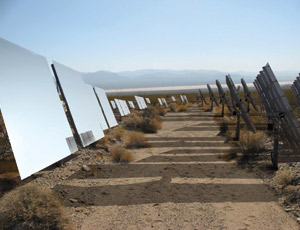Megaprojects will dominate construction to meet the world’s growing energy appetite, but securing financing and managing regulatory uncertainties remain key hurdles, according to government and industry leaders who assembled at the annual Massachusetts Institute of Technology Energy Conference in Cambridge, Mass.

While excitement bubbled up around panels and workshops on start-up projects in the clean-energy arena, industry, government and other attendees acknowledged that large-scale power generation would dominate future energy projects because of reliability and low cost.
“Megaprojects are here to stay,” said Mitch Dmokowski, director for commercial development for Sempra Generation, San Diego, which generates 2,600 MW of electricity in the U.S. using natural gas.He said there has been “an explosion” of small renewable projects in the Southwest, California and Hawaii that have succeeded largely due to government support. But because of the high cost per kWh for small renewable projects, countries in need of securing access to reliable, affordable power turn to conventional, large-scale generation, panelists said.
“Needs for large-scale infrastructure projects are dramatic,” said Ian Copeland, president of Bechtel Renewable Energy, a unit of San Francisco-based Bechtel, during a workshop on the challenges facing the development of large energy facilities. “We can barely keep up.”
But Andy Hoffman, a management professor in MIT’s Sloan School of Business, said managing large projects requires participants to get a better handle on financing, scheduling, cost goals, social acceptance and long-term challenges.
Gary Fischer, a general manager for Chevron Corp., said the oil firm currently has 130 megaprojects. The strongest projects scope regulatory, commercial and marketing issues. “Change control is important,” he said.
In dealing with complex owner consortiums, Copeland noted that the most successful projects were executed by the same stakeholders who designed them or whose plans and scopes were developed by those responsible for implementation. In addition, successful projects have adequate resources and funding and are based on a realistic plan and risk analysis. “If you can’t absorb the risk, don’t take it,” Copeland said.
Bechtel has 70 to 100 megaprojects under way, including the Mojave Desert-sited 400-MW Ivanpah Solar Electricity Generating System, set to become the world’s largest solar thermal facility.
With the rapid growth of emerging economies, public-private partnerships are becoming more common for funding energy projects. Yet the lack of certainty surrounding regulatory and policy issues in some countries raises a red flag for private-sector investment, panelists said.
Multibillion-dollar projects funded through a consortium of banks and private investors, whose investment decisions vary based on their perception of risk, create hurdles in securing financing for large-scale projects, said Wael Almazeedi, CEO of QGEN, a Boston-based energy finance and development firm. Panelists also said that clear policies were needed to create markets and incentivize investment in clean-energy development.
But some attendees disagreed. “I’m sick of waiting for developers who say they’re waiting for a market signal,” said Almazeedi, whose company develops utility-scale hybrid power generation and water desalination plants. “The onus is on us to come up with the technology, instead of waiting for government to give us an excuse. It’s not the way to run a business. We should be able to compete [with conventional] competitors.”

Post a comment to this article
Report Abusive Comment